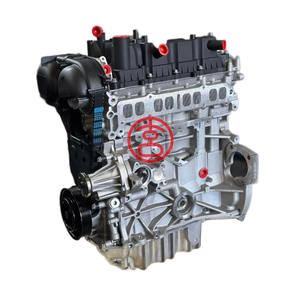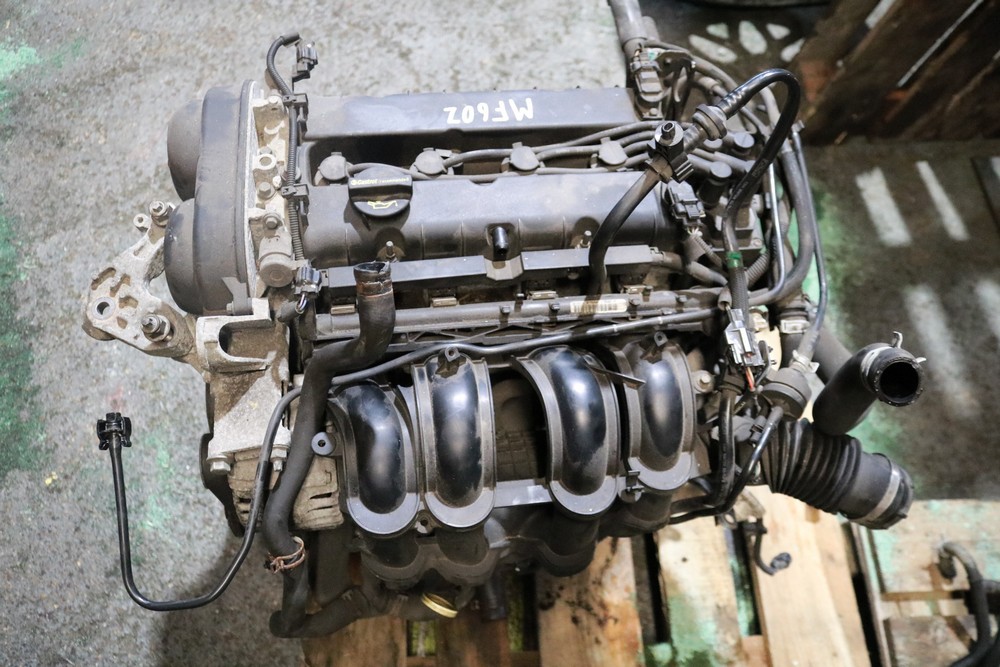Exploring the Benefits of a High-Performance Ford Fiesta Engine
Exploring the Benefits of a High-Performance Ford Fiesta Engine
Blog Article
Checking Out the Evolution of Engines: From Traditional Styles to Modern Marvels
From the preliminary heavy steam engines that powered the Industrial Revolution to the introduction of internal burning engines that changed mobility, each stage has contributed to higher efficiency and capability. As we take a look at these milestones, one need to take into consideration how the future of engine layout might unfold, testing our perceptions of power and effectiveness.
The Birth of Engine Modern Technology
The development of engine innovation noted a zero hour in human innovation, transforming power conversion and transportation. The earliest engines arised from the demand to harness mechanical power for practical usage, causing the advancement of gadgets that converted different power types right into motion. The idea of the engine can be traced back to old worlds, where basic devices, such as the waterwheel and windmill, utilized all-natural forces to carry out job. Nonetheless, it was throughout the late 17th and early 18th centuries that substantial advancements started to materialize.
The advancement of the internal burning engine and the development of the heavy steam engine catalyzed an extensive shift in commercial capacities. These engines not just improved effectiveness however also increased the extent of human wheelchair, making it possible for unprecedented transport opportunities. The very early prototypes laid the foundation for the mechanical globe, helping with the increase of markets and improving societal structures.
As engine designs evolved, they integrated ingenious materials and advanced engineering concepts, paving the means for contemporary advancements - ford fiesta engine. The birth of engine technology sparked an unrelenting search of efficiency and power, establishing the stage for the vibrant advancement of transportation and industrial equipment that would certainly adhere to
Steam Engines and Their Effect

The vapor engine's influence was especially noticeable in the transport sector (ford fiesta engine). Steam-powered locomotives facilitated the quick activity of items and individuals across huge ranges, efficiently diminishing the geographical obstacles that had previously hindered profession and communication. Steamships revolutionized maritime traveling, allowing for quicker and much more trustworthy crossings of oceans and rivers.
In sector, heavy steam engines powered factories, making it possible for mass production and the rise of metropolitan facilities as centers of economic activity. Vapor innovation fostered innovations in engineering and manufacturing procedures, laying the groundwork for future improvements in engine style.
The Increase of Interior Combustion
Regularly eclipsing heavy steam power, the increase of interior combustion engines marked a transformative shift in transportation and sector throughout the late 19th and early 20th centuries. The advancement of these engines, defined by their capacity to burn gas within the engine itself, enabled better effectiveness and power contrasted to conventional vapor engines. Pioneering developers such as Nikolaus Otto and Rudolf Diesel played vital functions in improving engine designs, resulting in extensive fostering in autos, watercrafts, and industrial equipment.
The inner burning engine's portable size and relatively light-weight nature facilitated the introduction of individual cars, transforming specific wheelchair and improving city landscapes. By enabling faster travel and the effective transportation of goods, these engines militarized economic development and cultivated globalization. The versatility of fuel choices, including fuel and diesel, additionally boosted their charm, permitting diverse applications across various industries.
In spite of the ecological problems that would later on our website develop, the first attraction of inner combustion innovation stocked its transformative potential. As culture accepted this advancement, the structure was laid for modern transport systems, developing inner burning engines as a keystone of industrial improvement and day-to-day live throughout the 20th century.
Improvements in Engine Performance
As internal burning engines came to be important to transportation and sector, the focus moved towards enhancing their efficiency to meet expanding needs for efficiency and sustainability. Advancements in engine layout, material science, and technology have actually significantly added to this evolution.
One major advancement is the development of turbocharging, which enables boosted air consumption, resulting in more complete fuel combustion and boosted power outcome without enlarging engine size. In addition, variable valve timing systems have been applied to enhance engine efficiency throughout different RPM arrays, therefore enhancing gas performance.
The use of sophisticated fuel injection innovations, such as straight injection, has actually additionally played a critical function. This technique permits for more specific control over the fuel-air blend, promoting much better burning and minimizing discharges. Light-weight products, consisting of light weight aluminum and composite components, have been taken on to decrease general engine weight, leading to boosted performance.
These improvements mirror a wider trend within the automotive market, where the harmony between engineering development and ecological factors to consider drives the ongoing pursuit for higher performance in internal combustion engines. Consequently, modern engines are now more powerful, cleaner, and reliable than in the past, leading the means for a much more lasting future in transport.
The Shift to Electric Power
With growing issues over environmental influence and fossil fuel dependency, the automobile market is experiencing a considerable shift in the direction of electric power. This transition is driven by a mix of technical improvements, regulatory stress, and changing customer preferences. Electric cars (EVs) provide an engaging option to conventional inner burning engines, article boasting reduced greenhouse gas discharges and reduced operating expense.
The increase of battery technology has been a game changer, with lithium-ion batteries becoming more cost-efficient and efficient. Boosted power thickness and faster billing capacities have actually made EVs much more useful for everyday usage. Federal governments worldwide are carrying out motivations and establishing enthusiastic targets for phasing out fossil gas vehicles, thereby accelerating the fostering of electric power.
As charging framework expands and battery technology proceeds to enhance, the change to electrical power is poised to improve the automobile landscape, advertising sustainability and click here now development in the years to come. The future of transportation is electric, and the momentum is obvious.
Final Thought
The evolution of engine innovation represents a substantial trajectory of technology that has actually greatly affected transport and market. From the foundational vapor engines to the transformative inner combustion engines, each advancement has actually contributed to improved wheelchair and financial growth.

Report this page